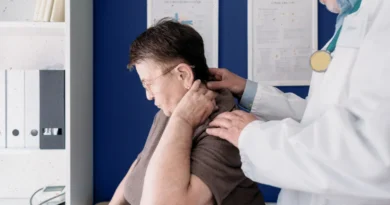Vascular Surgeons’ Approach To Managing Claudication
Claudication can make daily life difficult. Vascular surgeons focus on easing this discomfort. With a blend of science and skill, they help patients walk comfortably again. At the heart of this approach is a deep understanding of blood flow. Techniques honed over years, like those used in Battle Creek vascular surgery, pave the way. By improving circulation, surgeons aim to restore mobility and quality of life.
Understanding Claudication
Claudication is often described as muscle pain during exercise, usually in the legs. It happens because blood flow is restricted due to narrowed arteries. This can make activities like walking or climbing stairs hard to manage. Vascular surgeons step in to offer solutions that target the root cause—poor circulation.
Methods to Manage Claudication
Three main approaches are used by vascular surgeons to manage claudication:
- Exercise Therapy
- Medication
- Surgical Interventions
Exercise Therapy
Regular exercise improves circulation. Walking programs designed by professionals can help manage symptoms. These programs are tailored to slowly increase in intensity. This gradually strengthens the muscles and improves endurance without excessive strain.
Medication
Medications can help widen blood vessels or prevent blood clots. This improves blood flow and reduces symptoms. Common medications include antiplatelet agents and statins. These are prescribed based on individual needs and medical history.
Surgical Interventions
When exercise and medications are not enough, surgery may be the next step. Vascular surgeons have several techniques at their disposal:
| Procedure | Description |
| Angioplasty | A balloon is used to open narrowed arteries and improve blood flow. |
| Stenting | A small mesh tube is placed to keep the artery open after angioplasty. |
| Bypass Surgery | A graft is used to reroute blood around a blocked artery. |
These procedures are chosen based on the patient’s specific condition and overall health.
Importance of Early Detection
Recognizing symptoms early can prevent complications. Regular check-ups and paying attention to changes in mobility are crucial. Early intervention can lead to better outcomes and less invasive treatments.
Long-Term Management
Managing claudication is not just about immediate relief. It involves ongoing care and lifestyle changes. These can include quitting smoking, eating a balanced diet, and maintaining a healthy weight. Surgeons often work with nutritionists and physical therapists to provide comprehensive care.
Conclusion
Vascular surgeons offer hope and help for those with claudication. Their expertise and dedication ensure patients receive the best possible care. By focusing on blood flow and using proven techniques, they make strides toward improved mobility and quality of life.




